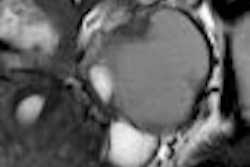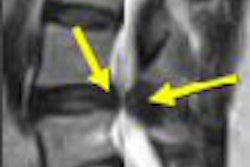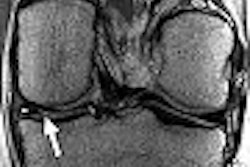A cardiac patient has a heart attack while getting onto the MR patient table in a dedicated outpatient facility -- what do you do? Evacuate the patient from the magnet room? Have the techs begin CPR? Call in the on-premises radiologist for emergent medical care? Or call 911 and stand around and wait, asking if anyone knows how to use the crash cart that has been decorating the patient holding area for the last several years? Can you guess what the subjects in this scenario did?
If you guessed "stand around and wait," you get the prize for today. Surprisingly for many jurisdictions and professional organizations, although there are requirements to have physicians on-hand to respond to patient contrast reactions, if that same patient codes, there are no requirements beyond calling 911!
How many imaging facilities have crash carts, defibrillators, and contrast-reaction kits close at hand? How many actually have staff trained in each of these on duty at all times when patients are in the facility?
Facilities should carefully evaluate plans for addressing code situations, particularly in the MRI suite. While this may be old hat for inpatient facilities that use MR for emergent cases, the opportunities for medical problems aren't limited to these hospital settings.
First, the patient. If a patient is in distress in the magnet room, how do you provide aid? It is inviting trouble to run a full code in a magnet room, so evacuating the patient is a crucial first step. For facilities with undockable tables, removing the patient from the magnet should not be too challenging or time-consuming. But for those sites where the patient table doesn't come free, how do you get your 250-lb patient out the door? Worse yet, if your facility flaunts best practice recommendations and has only a single technologist on duty, how does this lone person successfully evacuate the patient?
Once the patient is evacuated from the magnet room, who is capable and qualified to begin CPR or administer contrast-reaction medications? Who can assess whether the patient requires oxygen from the cylinder strapped to the crash cart, or can determine the appropriate volume, or even knows how to set up a cannula correctly? If the answers to these questions are ambiguous, why do you even have that crash cart?
It seems inconceivable that you could receive better care by having a heart attack at your local grocery store as opposed to an imaging center, but that may just be the case at some facilities.
What should imaging providers do to ensure that they don't wind up on the scary side of a deposition about an improperly treated patient? There are several steps, actually:
Dig through those old policy and procedure manuals, and blow the dust off of the one that actually has your emergency procedures. At some point in time, someone must have developed a plan and it may still be very workable. Read through it and evaluate it against today's patients, equipment, and exams. Tweak it as needed, or rewrite it as required.
Determine staff training and, if needed, require CPR training for all technologists and clinical support staff. Identify protocols for emergency stabilization and treatment, including the role of on-premises clinicians. Implement a plan to keep all basic and advanced life support credentials up-to-date.
Identify all emergency response materials, including medications and crash carts. Check expiration dates, battery charges, cylinder pressures, and stocks of supplies. If materials are onsite for which staff are not qualified to administer it, why is it there?
Drill. Thinking through a problem is not nearly the same as actually working through it. Running mock codes will allow you to test your physical and training preparations, and identify potential holes in your plan (how do you get that 250-lb patient off of the fixed table?).
As a provider of healthcare services, imaging centers should be held to a higher standard of preparedness for incidental emergencies. A plan of action should include more than staring at the tops of your shoes while waiting for the paramedics to arrive.
By Tobias Gilk
AuntMinnie.com contributing writer
June 11, 2007
Reprinted from www.mri-planning.com by permission of the authors. If you would like more information on any aspect of MR facility design or safety, please contact Robert Junk or Tobias Gilk at MRI-Planning.com.
Related Reading
An open letter to MRI equipment vendors, April 12, 2007
MR suite level designations: Don't let complex procedures overwhelm your facility, March 27, 2007
How to calculate your MRI suite safety score, February 8, 2007
MRI risk isn't standing still -- are you? January 29, 2007
It's 300 gauss: Do you know where your vent is? December 29, 2006
Copyright © 2007 MRI-Planning



















